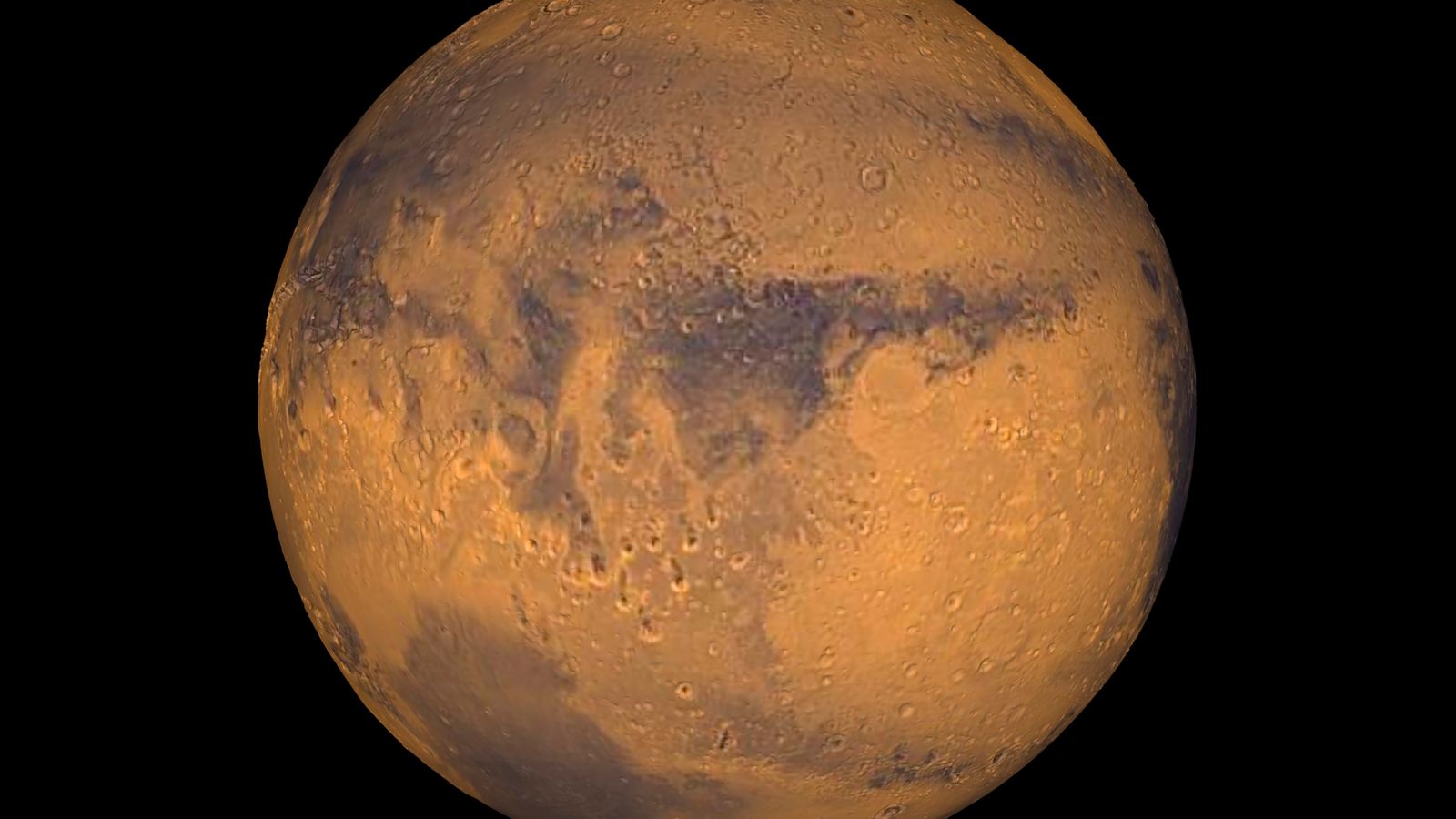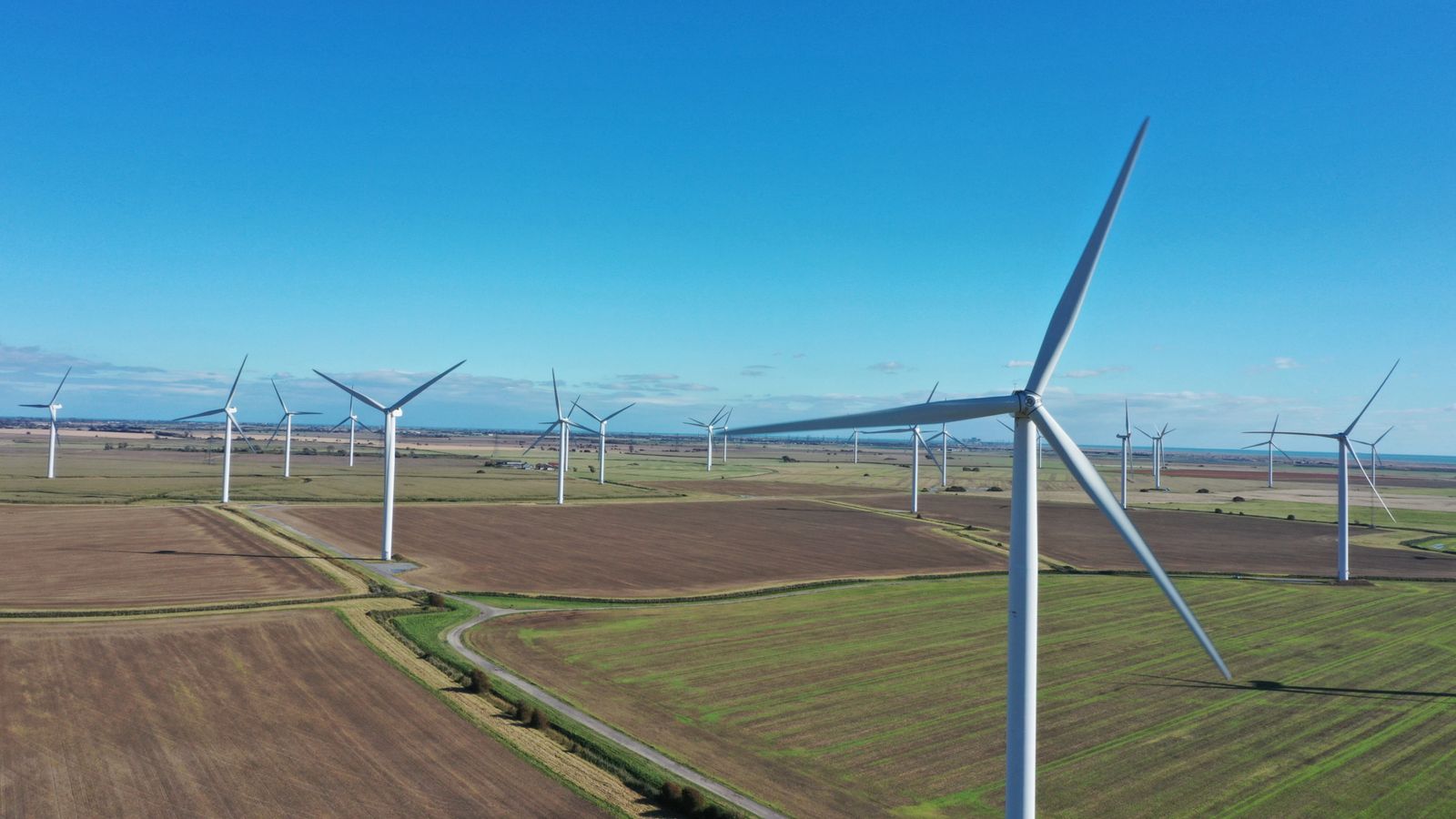The likely cause of the biggest ever seismic event recorded on Mars has been revealed following a UK-led study.
The 4.7-magnitude quake was recorded by NASA‘s InSight lander on 4 May last year, causing vibrations that reverberated through the planet for six hours.
It was initially thought to have been caused by a meteorite impact, which had resulted in similar tremors before.
But after a search of the red planet’s enormous surface, covering 144 million kilometres squared, an international research team found no sign of a fresh crater.
The results, published in the journal Geophysical Research Letters, indicate Mars is far more seismically active than scientists believed.
Study lead Dr Benjamin Fernando, of the University of Oxford, said the findings could even inform where it might be safe for humans to live should Elon Musk’s ambitions to colonise Mars become reality.
“We still think Mars doesn’t have any active plate tectonics today, so this event was likely caused by the release of stress within Mars’ crust,” he said.
“These stresses are the result of billions of years of evolution; including the cooling and shrinking of different parts of the planet at different rates.
“We still do not fully understand why some parts of the planet seem to have higher stresses than others, but results like these help us to investigate further.
“One day, this information may help us to understand where it would be safe for humans to live on Mars and where you might want to avoid!”
Read more science and tech news:
The rise and fall of BlackBerry
Debunking myths about the flu vaccine
NASA reveals ‘incredible’ asteroid findings
How the search unfolded
The quest to find a crater following the quake was a big effort.
That’s because while Mars is smaller than Earth, its lack of oceans means the land surface area is similar.
The large search required collaboration between space agencies and scientists around the world, including the European Space Agency, the Chinese National Space Agency, the Indian Space Research Organisation, and the United Arab Emirates Space Agency, which all offered the use of their satellites.
Be the first to get Breaking News
Install the Sky News app for free
It is thought to be the first time that all missions in orbit around Mars have collaborated on a single project.
But the work was spearheaded at Oxford by Dr Fernando, who said it should “serve as a template for productive international collaborations in deep space”.
The quake was one of the last events recorded by the InSight lander before it went offline last December, more than four years after landing on Mars.








